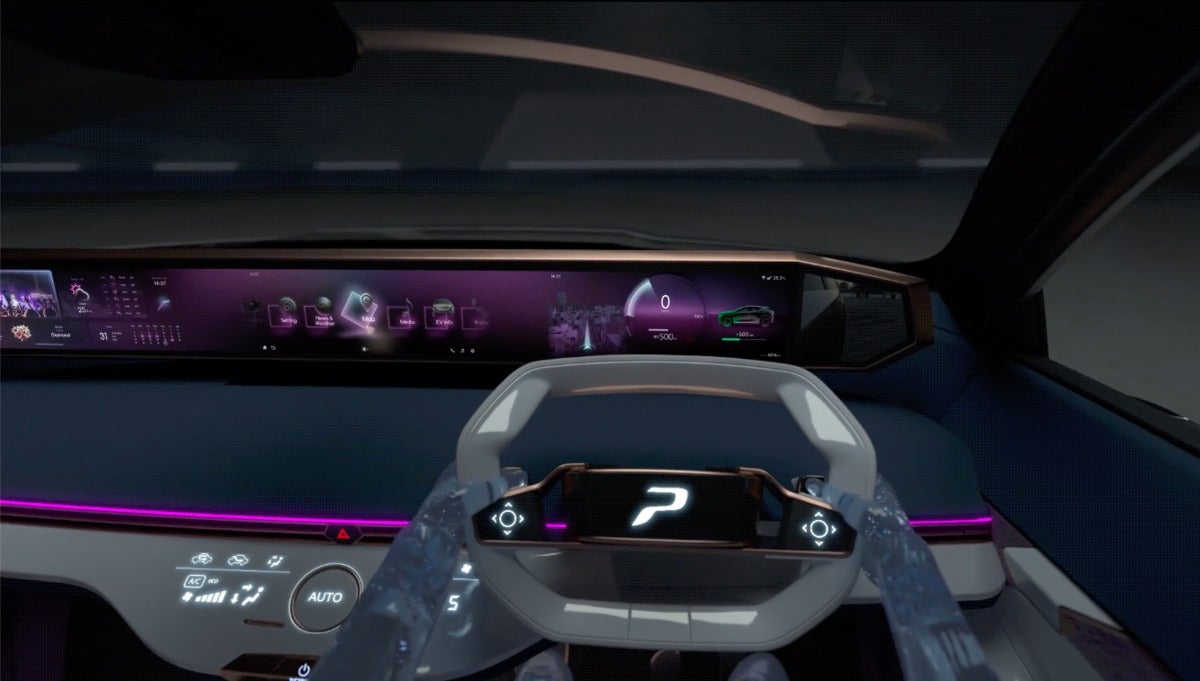Given how many of us who’ve had long business careers hate conference room meetings, it’s fascinating how much effort is going on now to re-create them in virtul reality (VR). Granted, innnovation generally focuses first on emulating the known with new technology. Still, you’d think we’d recognize that the conference room meeting model has traditionally been more of a drag on productivity than a benefit. (And many of us long ago learned how to quietly work during those meetings, so they don’t become such a time-suck.
Varjo, which currently has the top business-focused VR solution in the market, recently showcased (with partners Phiaro Corp. and LP-Research) a far better approach to focused collaboration. While it’s targeted at the automotive market, I think the idea has broader implications. This particular concept is a VR automobile that allows for virtual collaboration, creating a unique blend of physical and virtual attributes that can significantly speed up the automotive design process.
 Varjo
VarjoA virtual auto dashboard created by Varjo, Phiaro Corp. and LP-Research.
Let’s talk about creating generic hardware that can be blended with VR to speed development for more than just automobiles.
A holodeck for collaboration?
What made the Star Trek Next Generation holodeck fascinating is that it used hard light (also called solid light) in a virtual reality environment to create objects you could touch and feel in an environment that would not only engage the senses but be indistinguishable from reality. While we are making progress with hard light, another way to create the same kind of experience is with a flexible hardware platform that can supply physical touch elements with VR providing the visual.
In Varjo’s case, you get a virtual vehicle you can drive; you can touch all of the interior interfaces and see how they work; you get a feel for the view outside the “car” and a sense of what things look like when moving. Since the hardware is open, there is no cab; you’ll feel wind that otherwise wouldn’t exist (though you can likely mitigate that with clothing and a helmet). And with this technology, you can explore different options, even have focus groups look and experience different designs — all without building even a clay model, much less a complete prototype.
Granted, you have to create at least the panels for the interfaces and use switches where you will have physical switches or you won’t get the whole experience. But this approach could take years and millions of dollars off the cost of designing a new car.
The biggest-idiot-in-the-room problem
Often, the loudest voice wins in collaborative design efforts, which may explain some of the worst cars developed in recent years. And while a car failure will show that the loudest voice was an idiot, wouldn’t it be nice to get that proof before the car hits the market? In addition, no one has the money to explore all of the wild ideas and concepts designers come up with. Still, with VR, you are talking about a virtual representation of the car, and with this hardware prototyping platform, you can explore many more concepts for much less money.
Looking back at the development of the Ford Edsel in the 1950s, think what a difference it would have made to discover that people tend to hit the steering wheel shift buttons when they meant to hit the horn? You could also bring in influencers to check out new designs to determine which one is likely to go viral and create unusually strong demand.
This concept doesn’t just work for cars; think about desks, appliances, monitors, boats, or any device. It would be helpful to have both a virtual view and touch capability at the beginning of the design process instead of the end. You might even use something like this to design the next smartphone or iPod.
VR as a design disupter
Eventually, we’ll have solutions like hard light to create objects we can experience with code digitally. We can use 3D printing at scale to create prototypes, but get nearly that same experience with VR and universal design platforms created with Varjo, LP-Research, and Phiaro for even less.
I don’t think this is the end of the road for this, either. As augmented reality (AR) companies work out issues with AR occlusion and more of us wear AR glasses daily, there’s an opportunity for a generic class of products to be digitally enhanced so that your clothing, transportation, and even accessories are rendered. In the future, you might wear and drive generic green screen-like clothing and cars and carry generic hardware that can appear to you (or anyone) in a variety of ways.
I can imagine an entire class of products that require AR as part of the experience. In the end, this ability to rapidly cycle prototypes and test concepts should do amazing things for the design process and have a far more significant impact on collaboration than just digitally recreating conference rooms.
Copyright © 2021 IDG Communications, Inc.

